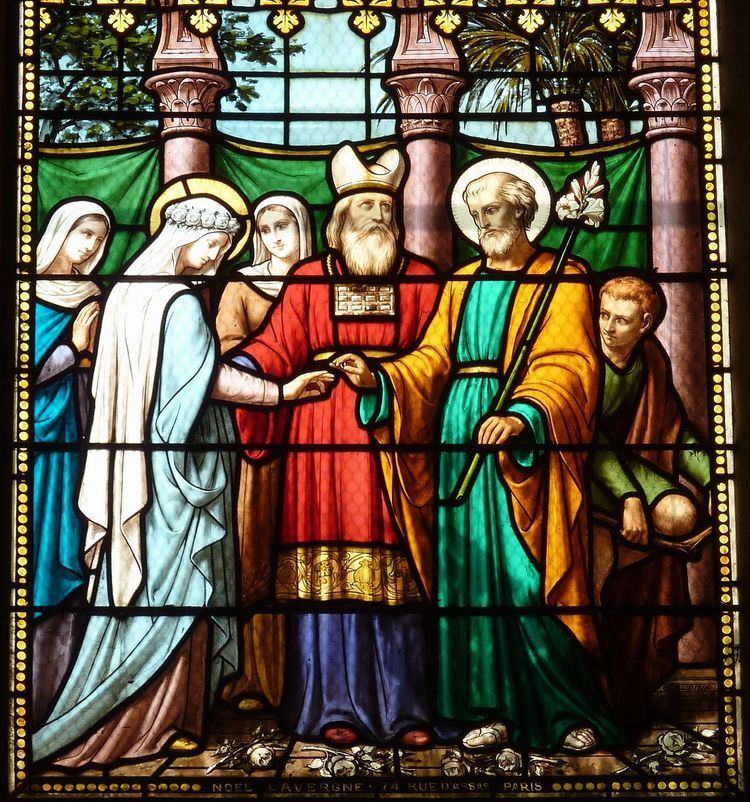 | ||
The Espousals of the Blessed Virgin Mary or Marriage of the Virgin Mary is a feast that is celebrated in certain parts of the Roman Catholic Church. It was removed from many local calendars by the Sacred Congregation of Rites. It was formerly generally observed on January 23.
Contents
History
In Matthew 1:16, Joseph is described as the husband of Mary. It is probable that Joseph and Mary were betrothed at Nazareth. The term "betrothal" indicates more than an engagement. It was customary to celebrate marriage in two stages, the first that of the contractual arrangements culminating in consent or "betrothal". After a period of perhaps one year in which preparations were made to establish a new home together, the second part stage of actually conveying the wife to that home would be accompanied by a great feast such as that recounted in the Gospel of John as the Marriage Feast at Cana (Jn 2:1-11).
Feast day
The first definite knowledge of a feast in honour of the espousals of Mary dates from August 29, 1517, when with nine other Masses in honour of Mary, it was granted by Leo X to the Nuns of the Annunciation, founded by Saint Jeanne de Valois. In certain particular churches the espousals of the Virgin Mary and St. Joseph are honoured with an office on January 23.
Gaspar Bertoni, founder of the Stigmatines, chose Mary and Joseph, in the context of their espousals, as patrons of the Congregation of the Sacred Stigmata.
In art
The subject of the Espousals of Mary and Joseph is depicted in a fresco in the German Chapel at the Shrine of the Holy House in Loretto, Italy; in a sculpture in the left portico of Holy Family Basilica in Barcelona, Spain; and in a stained glass window at St. Rita Basilica, Cascia, Italy.
